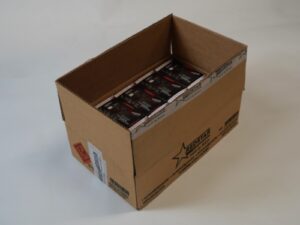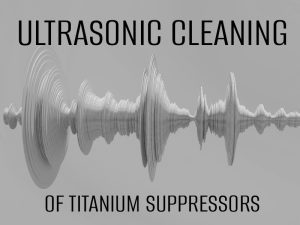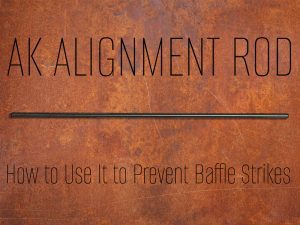You and your ZPAP just crushed a stack of targets. Now the smart move starts: cleaning a ZPAP the right way so it runs smoothly next time, and the time after that. The ZPAP platform gives you a stout 1.5 mm receiver, a bulged trunnion, and a tough barrel, so the routine stays simple and fast.
Below you’ll find a no-nonsense process that respects Zastava’s build quality, keeps accuracy tight, and keeps carbon from turning into concrete.
Safety Comes First, Every Time
Start with the basics. Point the muzzle in a safe direction. Remove the magazine. Lock the bolt to the rear and inspect the chamber, the bolt face, and the magwell. Feel with a finger as well as look.
Once you confirm clear, ride the carrier forward and set the rifle on a stable bench mat. A safe start sets the tone for cleaning a ZPAP like a pro.
Quick Field Strip, Zero Drama
The ZPAP rewards good habits with a fast strip:
- Press the rear button and lift off the dust cover.
- Compress the recoil spring assembly and pull it free.
- Draw out the carrier and bolt. Rotate and remove the bolt.
- Flip the gas-tube lever on the right side of the rear sight block. Lift the gas tube off the handguard.
That’s all you need for cleaning a ZPAP after a normal range day. You now see every part that collects the bulk of fouling: bore, chamber, gas piston, gas tube, bolt face, extractor claw, rails, and the fire-control area.
Right Solvent, Right Tool
ZastavaArms offers DRNCH, a purpose-built cleaner and lubricant for regular maintenance.
Grab a bottle for the bench and keep a spare in the range bag. You can pick up a single bottle here: DRNCH, or stock up with the DRNCH 6-Pack so you never run dry.
With cleaning a ZPAP, a consistent chemistry routine matters more than fancy gadgets.
Recommended tools:
- Coated one-piece rod or a pull-through cable
- 7.62 mm or 5.56 mm bore brush (match your ZPAP’s caliber)
- Chamber mop or patches with a proper jag
- Nylon utility brush and a small brass brush
- Cotton swabs and a dental pick for stubborn corners
- Lint-free patches and a microfiber cloth
Bore And Chamber: Keep It Straight
Zastava’s barrels hold up well, so the method stays straightforward. For cleaning a ZPAP bore:
- Wet a patch with DRNCH and push it through from chamber to muzzle. Always go with the bore’s natural direction.
- Pass a caliber-correct brush through the bore several times. No need to rush; smooth and steady strokes do more than brute force.
- Follow with fresh patches until they come out light gray or clean.
- Finish with a lightly oiled patch to protect steel without leaving a pool of lube.
Now hit the chamber. A chamber-size mop or a tightly wrapped patch on a jag clears powder flakes near the throat and cleans the shoulder area. Good chamber care pays off with smooth feeding and consistent lockup.
Gas System: Carbon Doesn’t Scare You
The ZPAP’s long-stroke piston shrugs off grime, but you should not gift it a carbon cake. For cleaning a ZPAP gas system:
- Wipe the piston with a DRNCH-damp cloth. Use a nylon or small brass brush for the ring behind the piston head.
- Run a DRNCH-wet patch through the gas tube. A purpose-made tube brush helps, though a snug patch on a loop works fine.
- Let the solvent work for a minute, then wipe dry. Resist heavy oil inside the gas tube; you want it clean, not slippery.
Bolt, Carrier, And Extractor: Reliability Lives Here
Cycle a clean rifle and you feel the difference right away. Focus on contact points:
- Bolt face and lugs: Break up any carbon around the firing-pin hole and the extractor groove. A nylon brush and a toothpick handle this without marring the metal.
- Extractor claw: Carbon in this nook causes extraction headaches. Brush the underside of the claw and the spring channel.
- Carrier rails and cam tracks: Wipe them clean, then add a thin film of DRNCH. With cleaning a ZPAP, less lube beats excess. A light sheen attracts less grit.
Receiver Interior: Don’t Forget The Corners
Tilt the receiver and tap out loose debris. Brush the rails, ejector, and the tail of the hammer. A lint-free patch wrapped around a finger clears the corners behind the magazine catch.
A few drops of DRNCH on the rails, hammer face, and disconnector contact points give you smooth cycling without mess.
Reassembly And Function Check: Confidence In Minutes
Slide the bolt into the carrier and confirm the cam pin rides its track freely. Insert the carrier group, seat the recoil spring, and snap on the dust cover. Return the gas tube and lock the lever to its original position. Run this fast function check:
- Charge the rifle and ride the bolt forward—smooth and positive.
- Safe → trigger press (no hammer drop).
- Fire → trigger press (hammer drops).
- Hold trigger to the rear, cycle the carrier, release the trigger until the reset click, press again.
- Safety lever up and down with no drag.
Everything feels crisp? You just nailed cleaning a ZPAP the Zastava way.
Lube Map: A Little Goes A Long Way
You don’t need to drown anything. Hit these spots with a light coat of DRNCH:
- Bolt lugs, bolt body, and cam surfaces
- Carrier rails and the channel where the piston meets the carrier
- Hammer contact face and the sear surfaces (light film only)
- Recoil spring guide rod (wipe, then a whisper of oil)
Excess oil migrates into the gas system and the magwell. Keep the film thin and even.
Cosmetic Care: Wood, Polymer, And Finish
Zastava furniture looks good and holds up well. Wipe wood with a barely damp cloth and follow with a dry buff. Polymer handguards and stocks clean up with a mild soap solution; then a dry wipe.
The receiver exterior stays perfect with a DRNCH-damp patch and a final dry cloth. Cleaning a ZPAP should leave the rifle ready for display and ready for work.
After Corrosive Ammo: Same Steps, Faster Timeline
If you used corrosive-primed surplus, move sooner. Rinse the bore and gas parts with hot water first to dissolve salts, then run the same DRNCH routine above. Immediate attention turns “emergency maintenance” into a normal post-range ritual.
With cleaning a ZPAP after corrosive ammo, timing matters more than force.
Why This Routine Works
Zastava’s design choices—robust trunnion, precise rails, durable finishes—reward simple, consistent care. You don’t chase perfection with laboratory rituals. You keep friction points clean, address carbon before it compacts, and run a proven lubricant.
Cleaning a ZPAP then becomes a short, satisfying habit that pays off with smooth recoil impulse, easy extraction, and tight groups. Do this every range day, and your ZPAP will outlast your ammo budget.



